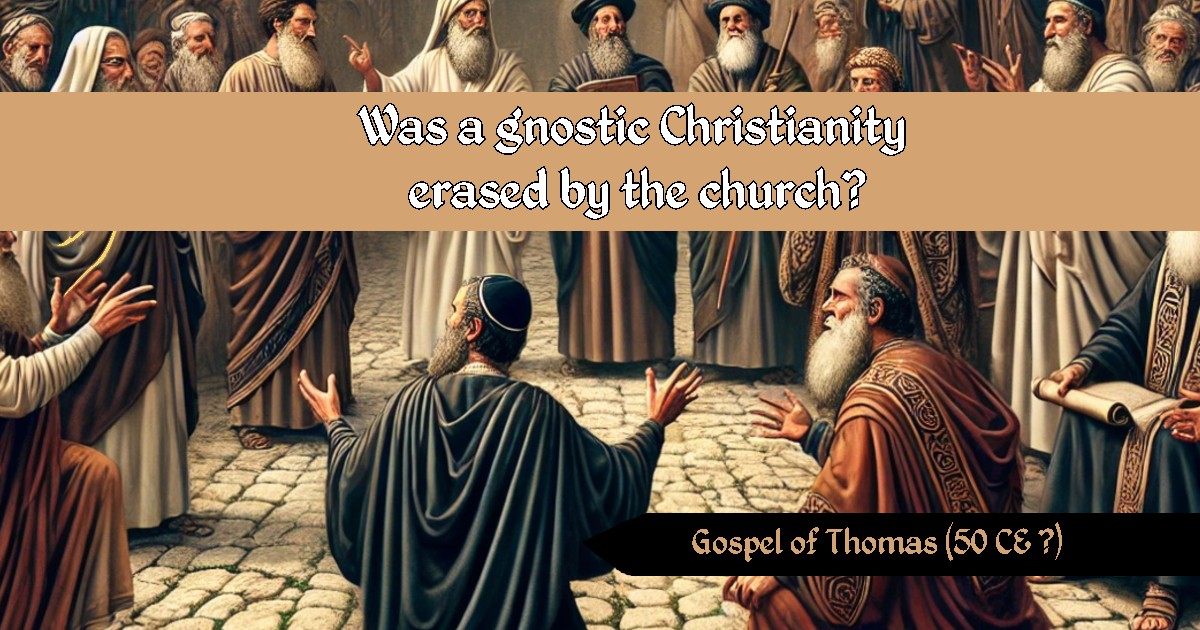What if early Christianity wasn’t what you were told?
Most believe that Christianity began with Jesus and his apostles, developed into a unified faith, and spread peacefully. But the truth is far messier. For centuries, rival Christian sects fought over the “true” version of Jesus’ message.
One of the most shocking revelations in modern scholarship is the erasure of Gnostic Christianity—a mystical, secretive faith that taught salvation came from hidden knowledge (gnosis) rather than belief in Jesus’ death. These teachings were violently suppressed by the rising Orthodox Church through persecution, book burnings, and outright executions.
Did Gnostic Christianity hold the true message of Jesus, only to be wiped out as “heresy”?
The Lost Battle for Christianity
The earliest Christian movements were diverse. Before one “orthodox” version became dominant, many sects fought for control of Jesus’ message:
Proto-Orthodox Christians – The ancestors of modern Christianity, believed in Jesus’ bodily resurrection and salvation through faith.
Gnostic Christians – Taught that Jesus’ message was about inner enlightenment and that Yahweh, the God of the Old Testament, was an evil false god (the Demiurge).
Marcionites – Followed Paul’s writings but rejected the Old Testament, believing Jesus came from a higher, unknown God.
Ebionites – Jewish Christians who rejected Paul, saw Jesus as fully human, and believed Christians must follow Jewish law.
By the 2nd and 3rd centuries, the Proto-Orthodox movement—backed by Roman converts and bishops—began wiping out rival sects. Through persecution, book burnings, and state-sponsored violence, Gnostic and other “heretical” Christians were erased from history.
The Lost Gospels & the Sects That Used Them
Before the Orthodox Church declared which books were “scripture,” different Christian groups had their own texts. Many of these Gospels, only rediscovered in modern times, reveal a very different Christianity—one that Rome sought to destroy.
The Gospel of Thomas (c. 50-140 CE)
- Sect: Thomasine Christians (Earliest Gnostic movement)
- Belief: Jesus’ sayings contain hidden wisdom (gnosis) that leads to enlightenment.
- Notable Quote: “The Kingdom of God is within you and all around you. Split a piece of wood, and I am there.”
- Suppression: Condemned as heresy. Copies burned, followers executed.
The Gospel of Mary Magdalene (c. 120-180 CE)
- Sect: Valentinian Gnostics
- Belief: Mary Magdalene was Jesus’ closest disciple, receiving deeper knowledge than Peter.
- Notable Quote: “Peter, my brother, do you think that I have thought this up myself or that I am lying about the Savior?”
- Suppression: The Church declared women could not be teachers, erasing Mary’s leadership role.
The Gospel of Judas (c. 130-180 CE)
- Sect: Sethian Gnostics
- Belief: Judas was Jesus’ most trusted disciple, helping him escape his material body.
- Notable Quote: “You will sacrifice the man that clothes me.”
- Suppression: Branded blasphemy. By the 4th century, all copies disappeared.
The Gospel of Philip (c. 150-250 CE)
- Sect: Valentinian Gnostics
- Belief: Jesus and Mary Magdalene had a spiritual (or romantic) relationship.
- Notable Quote: “The Lord loved Mary more than all the disciples and kissed her often on her mouth.”
- Suppression: Orthodox leaders banned the idea of Jesus having a close female disciple.
The Apocryphon of John (c. 120-180 CE)
- Sect: Sethian Gnostics
- Belief: The Old Testament God (Yahweh) is actually an evil false god (the Demiurge).
- Notable Quote: “It is I who am the light which exists in the light, and it is I who am the remembrance of the Father.”
- Suppression: This view was considered the most dangerous heresy.
The War Against “Heresy”
By the late 2nd century, Orthodox leaders like Irenaeus (c. 180 CE) launched a campaign to destroy rival Christian sects:
Irenaeus, Against Heresies (c. 180 CE)
- Declared Gnostics “tools of Satan” and demanded their writings be burned.
- Defined the “true” Gospels—Matthew, Mark, Luke, and John—and rejected all others.
Tertullian (c. 200 CE) called Gnostics “monstrous blasphemers” and demanded their execution.
Constantine (4th century) later made Orthodoxy the state religion—heretics were put to the sword.
Persecution of Gnostics & Other “Heretics”
3rd Century – Gnostic texts were seized and burned.
325 CE – Council of Nicaea – Emperor Constantine declared Orthodoxy the official version of Christianity.
380 CE – Edict of Thessalonica – Gnostic Christianity was outlawed under penalty of death.
4th & 5th Centuries – Gnostic communities were wiped out, their books destroyed.
By the 6th century, Gnosticism was erased from Christian history, its teachings labeled “heresy.”
What Does This Mean for Christianity Today?
The destruction of Gnostic Christianity was not just about theology—it was about power. The winners rewrote history, and the Church chose which Gospels became the “Word of God” while banning all others.
But now that the Gnostic texts have been rediscovered, we must ask:
Was mainstream Christianity built on the suppression of Gnostic wisdom?
Did the Church erase the real Jesus and replace him with a political savior?
Could the Gnostic Gospels reveal what early Christians truly believed?
With modern scholarship uncovering these lost texts, the real history of Christianity is finally being revealed.
Sources & Further Reading
Elaine Pagels, The Gnostic Gospels (1979)
Bart Ehrman, Lost Christianities: The Battles for Scripture and the Faiths We Never Knew (2003)
The Nag Hammadi Scriptures, Marvin Meyer (2007)
The Gospel of Judas, National Geographic Translation (2006)
Against Heresies, Irenaeus (c. 180 CE)
The Ecclesiastical History, Eusebius (c. 320 CE)

